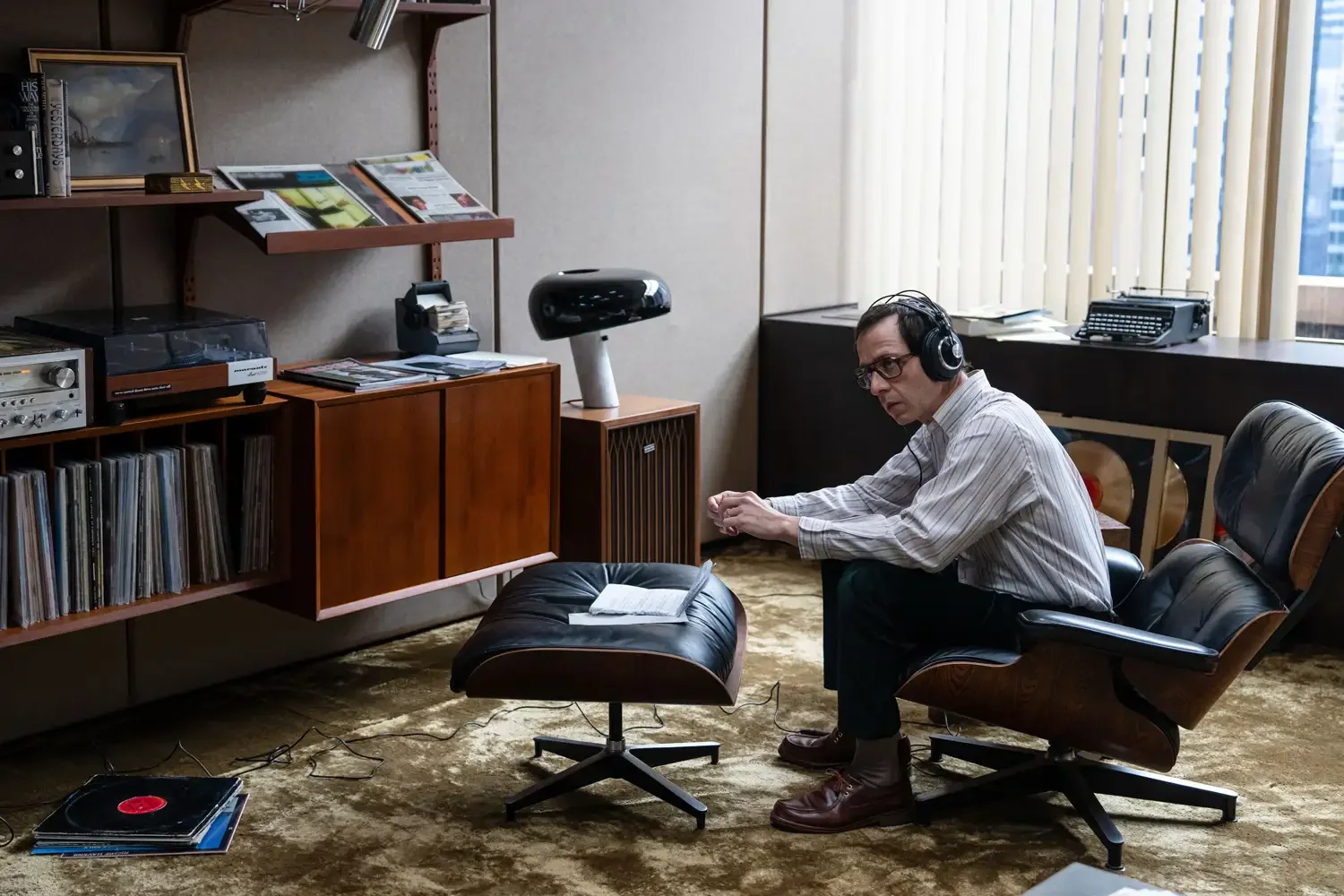Springsteen Movie House: Mid-Century Modern Mood from Deliver Me From Nowhere
When a movie about isolation and creativity uses mid-century homes to mirror emotion, we should take note. Springsteen: Deliver Me From Nowhere, directed by Scott Cooper, isn’t just a portrait of an artist — it’s a love letter to the kind of houses that hold creative energy.
As a mid-century modern enthusiast, I couldn’t help but focus less on the story beats and more on the spaces themselves: the rooms that framed Springsteen’s quiet genius, the textures that captured his solitude, and the architecture that made us feel his process.
The Film’s Context — Creative Solitude and Place
The film chronicles the period when Bruce Springsteen recorded his haunting 1982 album Nebraska — a stripped-down, emotionally raw project tracked alone on a four-track recorder at home. To capture that atmosphere, Cooper and his team used various New Jersey-based locations to capture the raw creative essence the film craved, two of which were the home where he dwelled:
A lakeside residence in Mountain Lakes, New Jersey, standing in for Springsteen’s real-life Colts Neck home where he recorded the album.
A Los Angeles–set home, representing the house Bruce later bought during his early career success — a space that reflected his push-pull between fame and grounding.
Bruce’s Manager’s office, representing the vintage setup of a professional geared for meticulous listening sessions to professionally inhale the artistry of his clients.
Both homes were chosen not for celebrity gloss, but for their soul — and that’s what makes them so inspiring for design lovers.
The Trailer
First of all, if you haven’t seen the film, go check it out. The Bear’s Jeremy Allen White puts on a genuine performance playing Bruce, which the real Springsteen noted on several talkshows as a "terrific actor" who did a "wonderful job" and created an "interpretation" that fans would "deeply recognize”. Here’s the trailer:
The Lakeside New Jersey Residence
Credit: 20th Century Studios
This home, used to depict Springsteen’s isolation during Nebraska, became a character in itself. The lakeside Mountain Lakes property felt like time stood still the moment you walked in — warm wood paneling, generous glass windows, and a gentle openness that echoed the emotional quiet of the film’s narrative.
Production manager Sarah Brady Stack told MotionPictures.org:
“This lovely couple raised their children there and meticulously preserved it from the ’70s. It truly felt like a time capsule when you walked in the front door. There was this electric charge from all the love that’d been put into it. It felt like magic when you walked in — everyone, including Scott Cooper, felt it once we saw it: This is THE house. It was just meant to be, kind of like fate.”
That sense of “lived-in preservation” comes through on screen — the honey-toned wood, the open sightlines to the water, and the unpretentious warmth of a space that’s been cared for, not curated.
Closer Look
You can note the mismatched dining table setup, set with different chairs, and an octagonal table that wasn’t your classical mid-century modern Saarinen tulip table with perfectly matching chairs. The floor lamp resembled a classic mid-century modern design silhouette, but wasn’t over-glamourized by anything pretentious. This brings the working-class to the forefront, but maintains the yearning for design aethetics.
Credit: 20th Century Studios; Photo: Macall Polay
Design Takeaways:
Keep original materials where possible — the patina of wood and stone adds emotional depth.
Bring the natural beauty of the surroundings inside the space — where it’s not broke, don’t fix it.
Layer in textiles and acoustic-friendly surfaces — rugs, drapery, soft upholstery — that create a sense of quiet focus.
Resist the temptation to over-style; let restraint speak for itself.
The LA Home (and the NJ Interior That Stands In)
In the film, we later see Bruce’s Los Angeles home — a symbol of transition, success, and uncertainty. While the film depicts a West Coast address, the interior scenes were actually shot in Montclair, New Jersey, chosen for its architectural spirit and emotional resonance.
The Montclair home offered an upgrade to the same feel from the past space — elevated but grounded. It featured the same floor-to-ceiling windows, clean mid-century modern furniture, earthy textures, this time overlooking the ocean as an upgrade to a quiet lake. The set design avoids still Hollywood excess, instead leaning into the poetic restraint of mid-century modern living: natural light, functional layout, and a focus on how space supports introspection.
Design Takeaways:
Channel “elevated but humble” — balance clean design with approachable warmth.
Mix vintage and contemporary: walnut credenzas, pendant lighting, and neutral textiles create timeless harmony.
Preserve emotional continuity in your interiors — let your personal story shape the space.
Manager’s Office
The pristine office was magnificent, featuring a Cado-style wood wall unit lined with records and vintage audio gear. You’ll spot a typewriter, Eames lounger, and over-the-ear-style headphones to top off the vibe, which served as a reflection of his much more organized personality. This was a fun contrast between the tight record business and the down-home artistic lifestyle of Bruce, yet the mid-century modern style was the throughline for the sets.
Credit: 20th Century Studios; Photo: Macall Polay
Why These Homes Work So Well On Film
Mid-century architecture naturally frames emotion. The combination of open plans, natural materials, and grounded proportions makes every moment feel personal and cinematic. The film’s production design understands that — giving the audience a sense that the house is listening, quietly holding the artist’s solitude.
For Eichler homeowners or fans of modernist design, it’s a masterclass in how authenticity and atmosphere elevate a space far beyond aesthetics.
How to Get the Look
Here’s how you can capture the film’s understated, soulful style in your own home:
Start with the palette: warm neutrals, aged wood, matte white, and muted blues.
Layer lighting: opt for floor lamps and low pendant fixtures for cinematic shadows.
Embrace imperfection: let wood grain, patina, and small scuffs show — they tell stories.
Keep it acoustically soft: use rugs, bookshelves, and upholstered pieces to absorb sound.
Design for solitude: create one “creative corner” — a reading, writing, or music nook that feels personal and unplugged.
Final Thoughts
Deliver Me From Nowhere may be a story about Springsteen’s creative breakthrough, but for design lovers, it’s also about the quiet power of space. Both homes — the lakeside New Jersey time capsule and the LA-inspired retreat — remind us that good design doesn’t shout. It listens.
In preserving authenticity, emotion, and restraint, the film gives us the best kind of design lesson: that the most inspiring spaces aren’t perfect — they’re honest.



